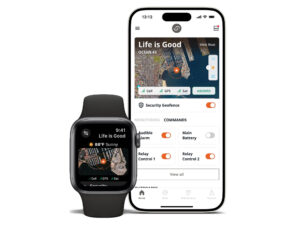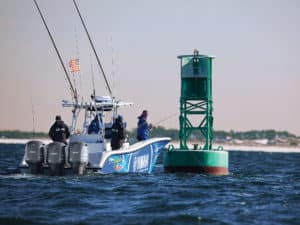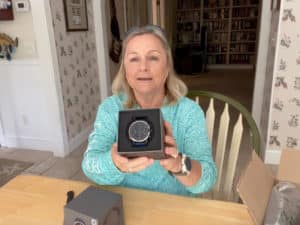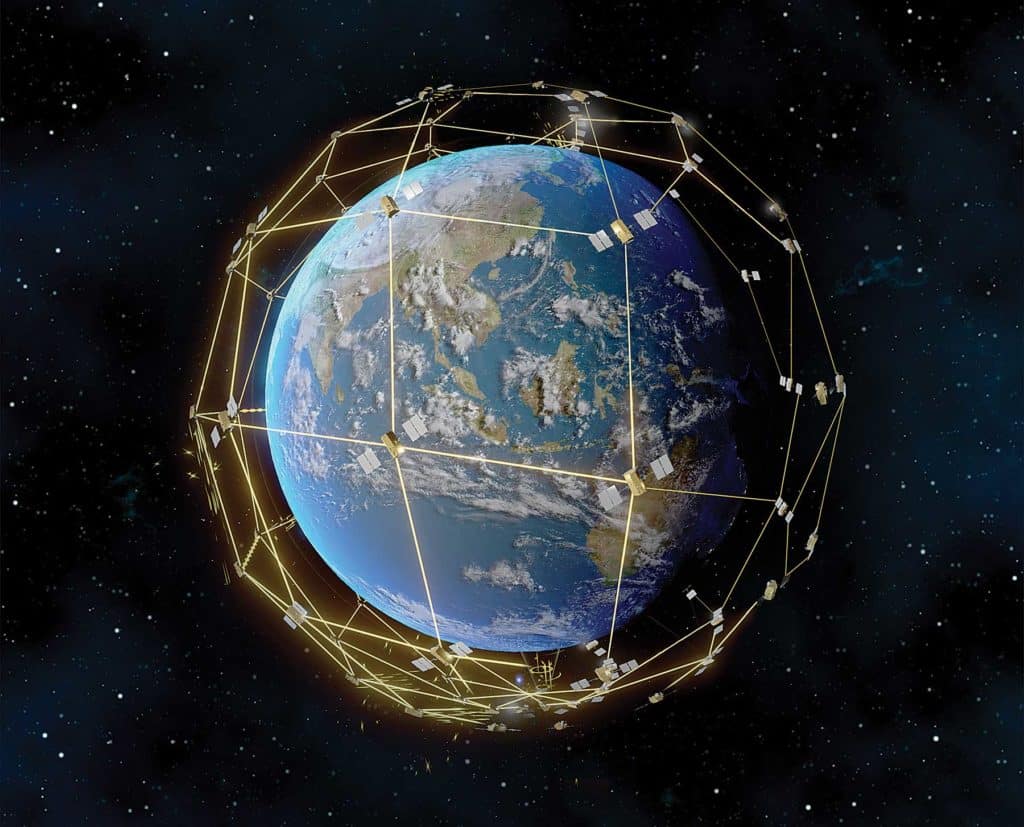
SpaceX might make splashy headlines with the more-experimental sci-fi side of its rocket business, but in the business world, the company’s now-routine private launches are serving the offshore-marine industry. This past March, SpaceX launched the fifth set of 10 Iridium Next satellites into orbit; Iridium is a major provider of satphone service on the water.
Indeed satellite-phone and -internet possibilities for offshore and traveling anglers continue to expand. Globalstar has just introduced its Sat-Fi2 unit, updating the original 2014 portable smart-device-to-satellite Sat-Fi terminal.
With trick new satellites launching, better options outside cellular range, and impressive handheld satphones, tomorrow’s anglers inch closer to total connectivity. What are the latest developments in our global satphone space? I asked three recreational-fishing satphone providers for updates.
Next Generation
Iridium, which introduced its Go! product in 2014 to give smartphones a satellite connection, has completed more than half of its eight Next satellite launches. The company, using SpaceX Falcon rockets, plans to finish the $3 billion, 75-satellite upgrade by the end of the year. (Fifty Next satellites had achieved orbit by press time.)
Next satellites will enable a specialty broadband service that Iridium has named Certus. The company says this new offering will be highly reliable because of the advantages of the low-earth-orbit network’s unique architecture. “It is unaffected by weather conditions or the need for ground stations, unlike other networks,” Iridium says.
Certus should be commercially available in mid-2018. It will offer high-definition voice capabilities as well as IP data speeds debuting at 352 kilobits per second, with eventual speeds of up to 1.4 megabits per second. While that’s much slower than terrestrial internet plans — the fastest of which can generate up to 49 Mbps — it represents a major improvement for even compressed satellite-data speeds of about 20 to 30 Kbps within affordable plans.
Certus’s six plans will range from lower-priced, slower-data and phone uses to more-costly fleet services. “Iridium Certus will fundamentally change how satellite internet works and will make broadband internet access available anywhere on the planet,” Iridium says.
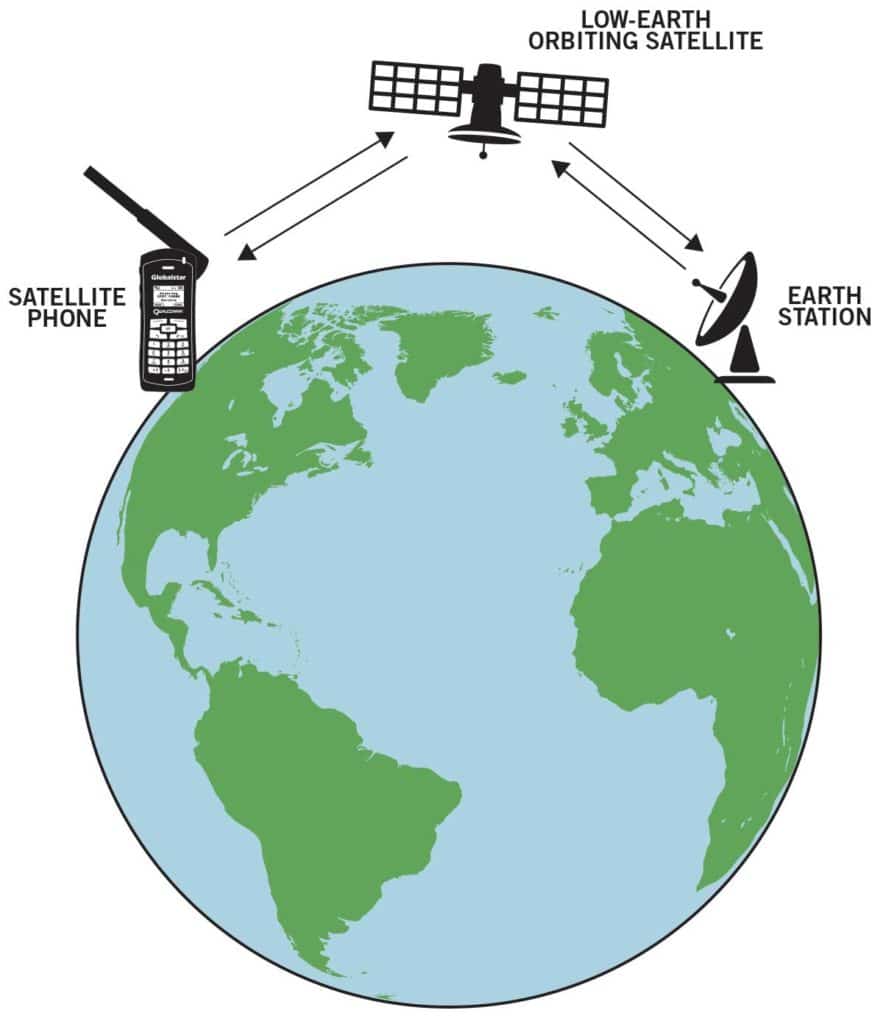
Version Two
Globalstar’s Sat-Fi began an entirely new era of offshore smartphone use when it debuted in 2014. Using two apps, an angler fishing in the middle of the Gulf of Mexico, for instance, could connect his phone to the Sat-Fi terminal, and then call, text, post to social media, or report emergencies. The Sat-Fi2 updates the original unit and offers these changes:
• The price is about half of the Sat-Fi retail, at $499.99.
• You can now use your personal email address from providers such as Outlook, Gmail or Yahoo.
• The new version is water- and impact-resistant.
• Sat-Fi2 now has an SOS button, which will work just like Globalstar’s Spot products.
• Sat-Fi2 is more compact, weighing only 12.6 ounces, and measuring 5.8-by-2.9-by-1.5 inches.
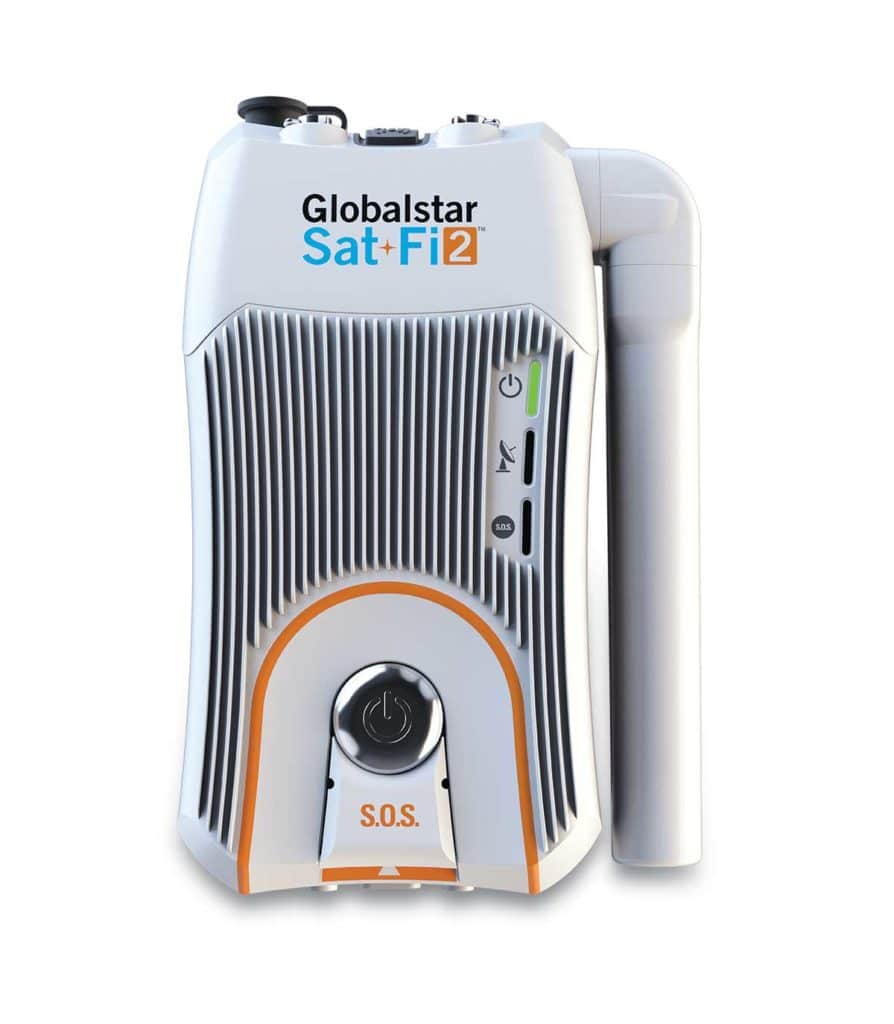
The new device also operates on Globalstar’s second-generation constellation of 24 low-earth-orbit satellites, completed in 2013. On any given call, several satellites transmit a caller’s signal to a satellite dish at the appropriate gateway, where the call is routed locally through terrestrial telecommunications.
The system’s software resides on the ground, not on the satellites, which means faster and easier maintenance and upgrades, Globalstar says.
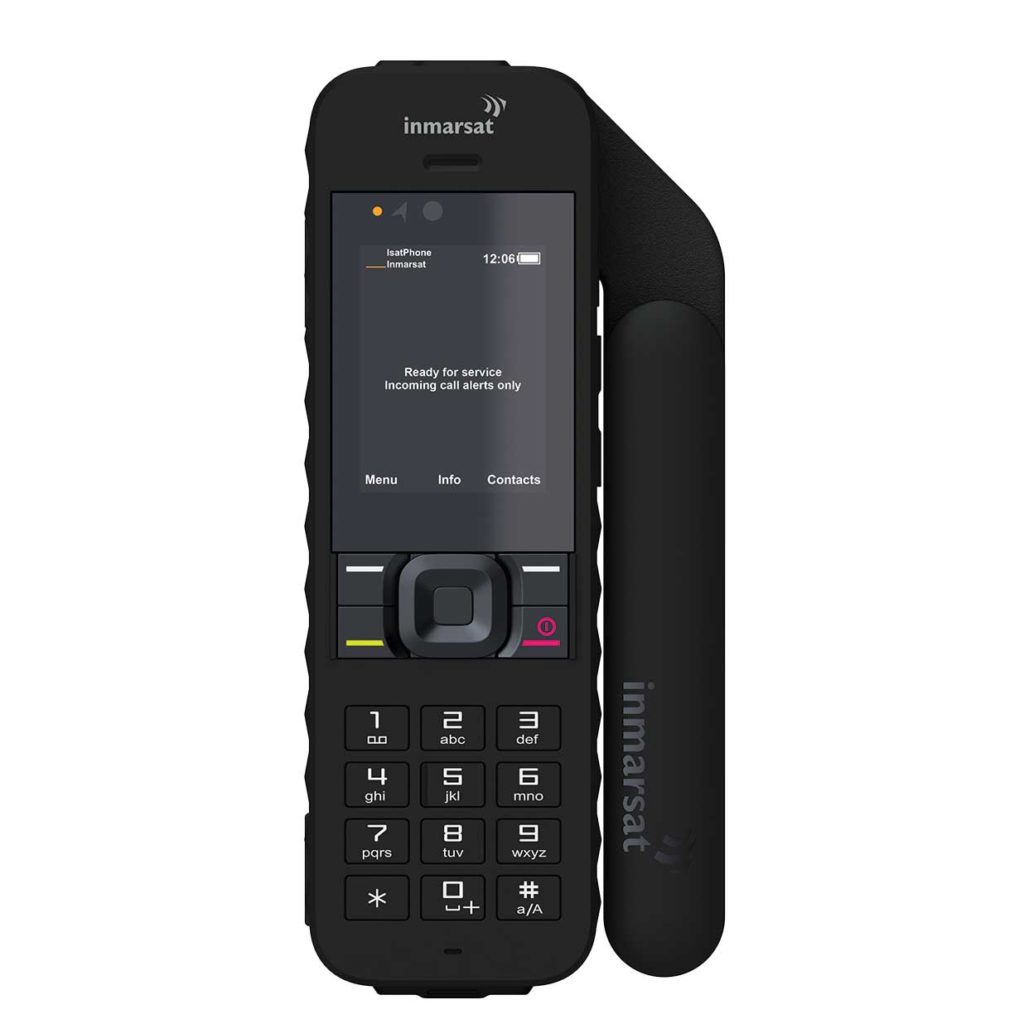
On the Edge
Inmarsat launched the fourth of its I-5 satellites last year, also employing SpaceX rockets. The I-5s enable Inmarsat’s Global Xpress broadband network, which has clocked throughput speeds in excess of 300 Mbps. However, the system currently services primarily commercial and military clients.
On the more-portable side: Even though Sat-Fi and Go! units can now marry smartphones to satellite service, the offshore-fishing market still depends on handhelds, which can be convenient for ditch bags and for land‑based use on remote islands.
While it is not brand-new, Inmarsat’s IsatPhone 2 handheld satellite phone debuted in 2014 with improved battery life, offering eight hours of talk time, and up to 160 hours on standby. The 11.2‑ounce phone features a high‑contrast color screen, and offers voice services such as caller ID, conferencing and speed dialing, as well as text-to-text and text-to-email.
Read Next: Electronic Marriage: Smartphones and Satellite Technology
IsatPhone 2 also comes with location services, including tracking (to keep people updated with your GPS coordinates) and an assistance button. Anglers receive notification of inbound calls even with the antenna stowed.
The handheld phone costs $600 to $700, and service plans vary. Customers who opt for monthly plans receive free worldwide emergency assistance from GEOS with a single push of the unit’s assistance button.
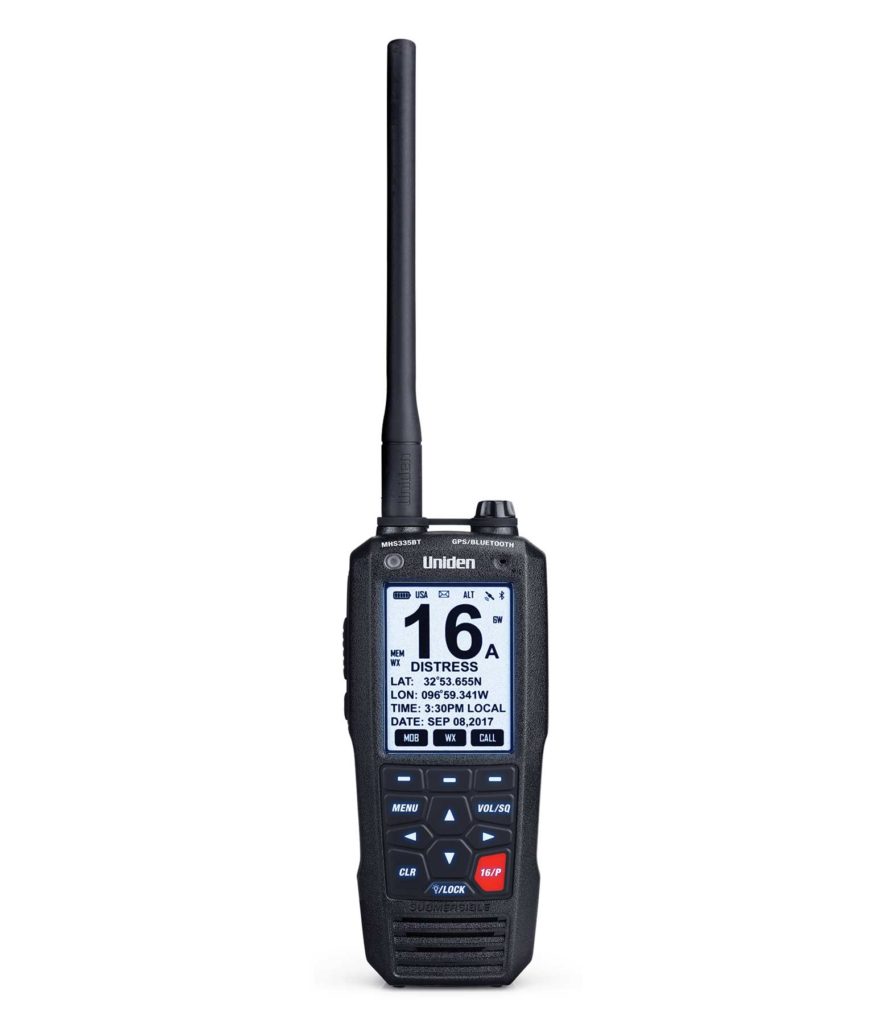
New Ideas
Anglers will eventually feel the trickle-down effect from higher-priced commercial satellite systems whose speeds continue to impress. Such connectivity should improve safety and make available on remote waters everything we can now do at the dock or within Wi-Fi range.
In addition, VHF-marine-radio provider Uniden just announced a completely new form of communication: text by VHF. Uniden’s new MHS335BT handheld VHF will enable boaters to use a smartphone to text-message other VHF radios, even when no cellular coverage is available. The radio costs $299.99.

